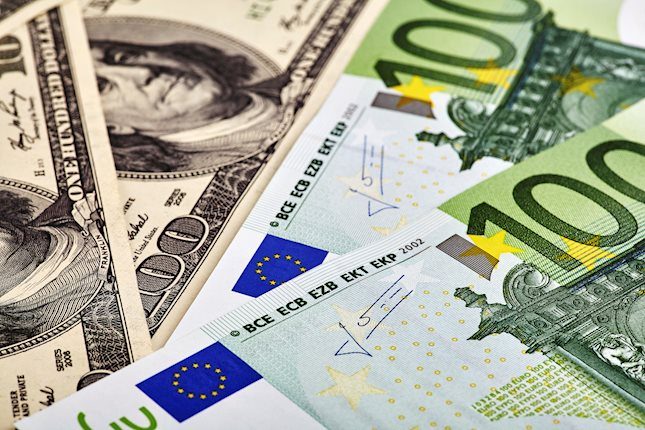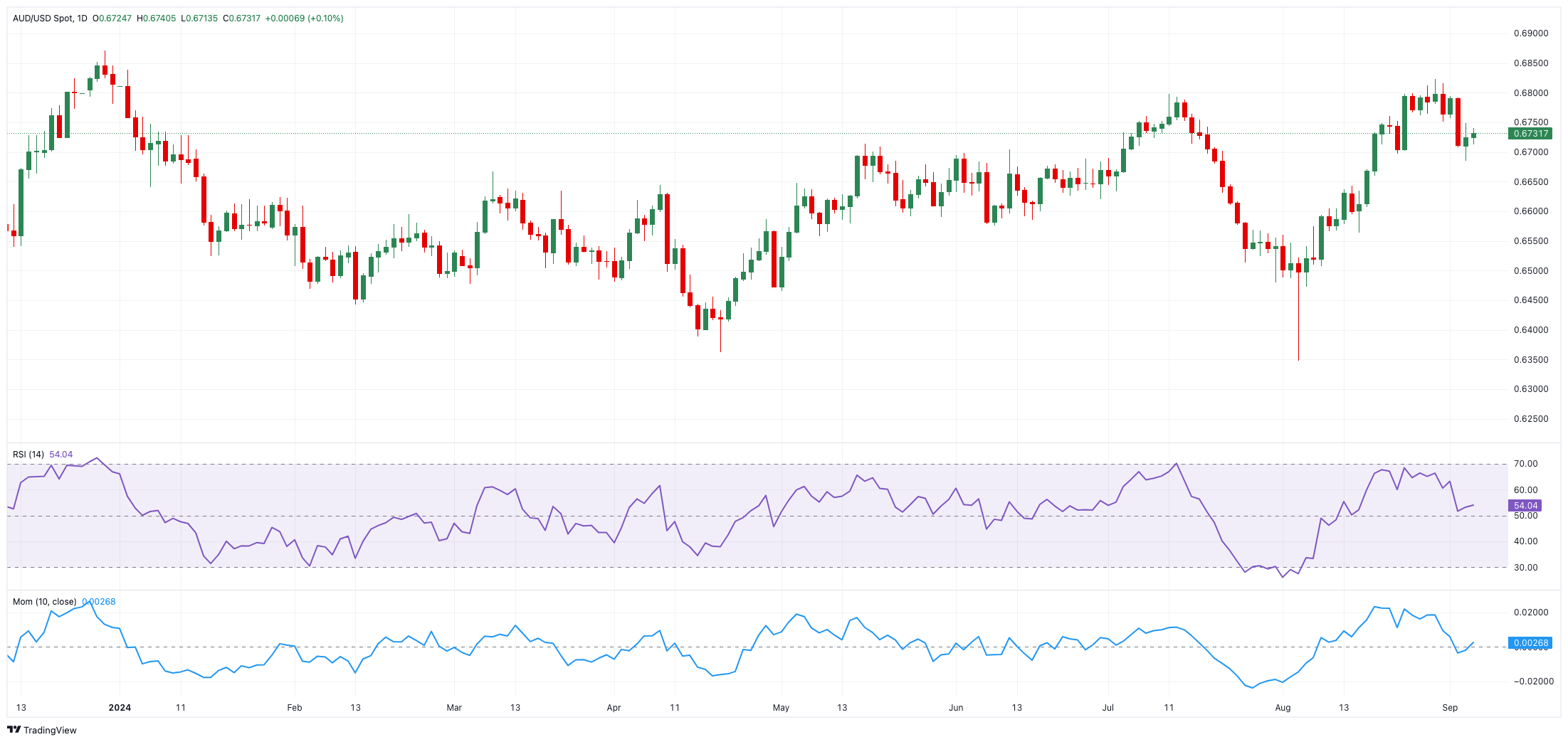- AUD/USD kept the upside traction in place and added to Wednesday’s gains.
- The Dollar remained on the back foot on further easing of the labour market.
- Australia’s trade surplus widened to more than A$6.0B in July.
The US Dollar (USD) maintained its bearish mood and added to losses recorded in the previous day, boosting risk-linked assets and allowing AUD/USD to rebound past 0.6700 the figure on Thursday.
Despite a strong drop seen earlier in the week, the Australian Dollar maintained its positive outlook, supported by the key 200-day SMA at 0.6615. This optimistic view, however, was threatened by the recent strengthening of the USD and ongoing concerns about China's economic prospects.
The daily rebound in AUD/USD was supported by a decent recovery in both copper and iron ore prices. On the latter, continuing weakness in iron ore prices is likely to limit further gains for the AUD, given their direct correlation with China's economic activity.
Recent monetary policy shifts have also supported the Australian Dollar's upward momentum. The Reserve Bank of Australia (RBA) recently kept the Official Cash Rate (OCR) at 4.35%, taking a cautious stance amid ongoing inflationary pressures with no immediate signs of easing.
Further confidence in the AUD was driven by a hawkish tone in the latest RBA Minutes, which highlighted debates among members on whether to increase the cash rate target. The minutes highlighted ongoing inflationary pressures and market expectations of potential rate cuts in late 2024.
Still around the RBA, Governor Michelle Bullock maintained the bank's hawkish stance on Wednesday, cautioning about the dangers of high inflation. She reiterated that if the economy develops as expected, the Board does not foresee being in a position to cut rates in the near term.
Despite this, RBA cash rate futures still indicate a high likelihood of around 85% of a 25 bps cut by year end.
All in all, the RBA is expected to be the last among G10 central banks to begin cutting rates.
However, with almost fully priced-in rate cuts from the Federal Reserve (Fed) on the horizon and the RBA likely to maintain a restrictive policy for an extended period, AUD/USD could see further gains in the latter part of the year.
Nonetheless, the Australian Dollar's gains may be limited by the glacial-paced recovery of the Chinese economy. Deflation and insufficient stimulus measures are hindering China’s post-pandemic recovery. The latest Politburo meeting, while showing support, did not announce any significant new stimulus measures, raising concerns about demand from the world's second-largest economy.
Meanwhile, the latest CFTC report for the week ending August 27 showed that speculators remained net short on the AUD, although their positions were halved from the previous week. The AUD has been in net-short territory since Q2 2021, with only a brief two-week exception earlier this year.
On the economic data side, Australia's trade surplus widened to A$6.009B in July, with exports up 0.7% MoM and imports down by 0.8% MoM.
AUD/USD daily chart
AUD/USD short-term technical outlook
Further rises are likely to bring the AUD/USD to its August high of 0.6823 (August 29), then to the December 2023 top of 0.6871 (December 28), and finally to the key 0.7000 yardstick.
Sellers, on the other hand, may initially drive the pair to its September low of 0.6685 (September 4), which is prior to the temporary 55-day SMA of 0.6667 and the key 200-day SMA of 0.6615.
The four-hour chart shows a gradual restoration of the upward bias. Nonetheless, the immediate resistance level is the 55-SMA at 0.6766, followed by 0.6823, which comes before 0.6871. On the other side, the initial support level is 0.6685, which is followed by the 200-SMA at 0.6643 and then 0.6560. The RSI hovered around 45.
Information on these pages contains forward-looking statements that involve risks and uncertainties. Markets and instruments profiled on this page are for informational purposes only and should not in any way come across as a recommendation to buy or sell in these assets. You should do your own thorough research before making any investment decisions. FXStreet does not in any way guarantee that this information is free from mistakes, errors, or material misstatements. It also does not guarantee that this information is of a timely nature. Investing in Open Markets involves a great deal of risk, including the loss of all or a portion of your investment, as well as emotional distress. All risks, losses and costs associated with investing, including total loss of principal, are your responsibility. The views and opinions expressed in this article are those of the authors and do not necessarily reflect the official policy or position of FXStreet nor its advertisers. The author will not be held responsible for information that is found at the end of links posted on this page.
If not otherwise explicitly mentioned in the body of the article, at the time of writing, the author has no position in any stock mentioned in this article and no business relationship with any company mentioned. The author has not received compensation for writing this article, other than from FXStreet.
FXStreet and the author do not provide personalized recommendations. The author makes no representations as to the accuracy, completeness, or suitability of this information. FXStreet and the author will not be liable for any errors, omissions or any losses, injuries or damages arising from this information and its display or use. Errors and omissions excepted.
The author and FXStreet are not registered investment advisors and nothing in this article is intended to be investment advice.
Recommended Content
Editors’ Picks

EUR/USD sits at yearly lows near 1.0550 ahead of EU GDP, US PPI data
EUR/USD is trading near 1.0550 in the European session on Thursday, sitting at the lowest level in a year. The Trump trades-driven relentless US Dollar buying and German political instability weigh on the pair. Traders await EU GDP data and US PPI report ahead of Fed Chair Powell's speech.

GBP/USD holds losses below 1.2700 on sustained US Dollar strength
GBP/USD is holding losses near multi-month lows below 1.2700 in European trading on Thursday. The pair remains vulnerable amid a broadly firmer US Dollar and softer risk tone even as BoE policymakers stick to a cautious stance on policy. Speeches from Powell and Bailey are eyed.

Gold price hits fresh two-month low as the post-election USD rally remains uninterrupted
Gold price drifts lower for the fifth consecutive day and drops to its lowest level since September 19, around the $2,554-2,553 region heading into the European session on Thursday. The commodity continues to be weighed down by an extension of the US Dollar's post-election rally to a fresh year-to-date.

XRP struggles near $0.7440, could still sustain rally after Robinhood listing
Ripple's XRP is trading near $0.6900, down nearly 3% on Wednesday, as declining open interest could extend its price correction. However, other on-chain metrics point to a long-term bullish setup.

Trump vs CPI
US CPI for October was exactly in line with expectations. The headline rate of CPI rose to 2.6% YoY from 2.4% YoY in September. The core rate remained steady at 3.3%. The detail of the report shows that the shelter index rose by 0.4% on the month, which accounted for 50% of the increase in all items on a monthly basis.

Best Forex Brokers with Low Spreads
VERIFIED Low spreads are crucial for reducing trading costs. Explore top Forex brokers offering competitive spreads and high leverage. Compare options for EUR/USD, GBP/USD, USD/JPY, and Gold.
